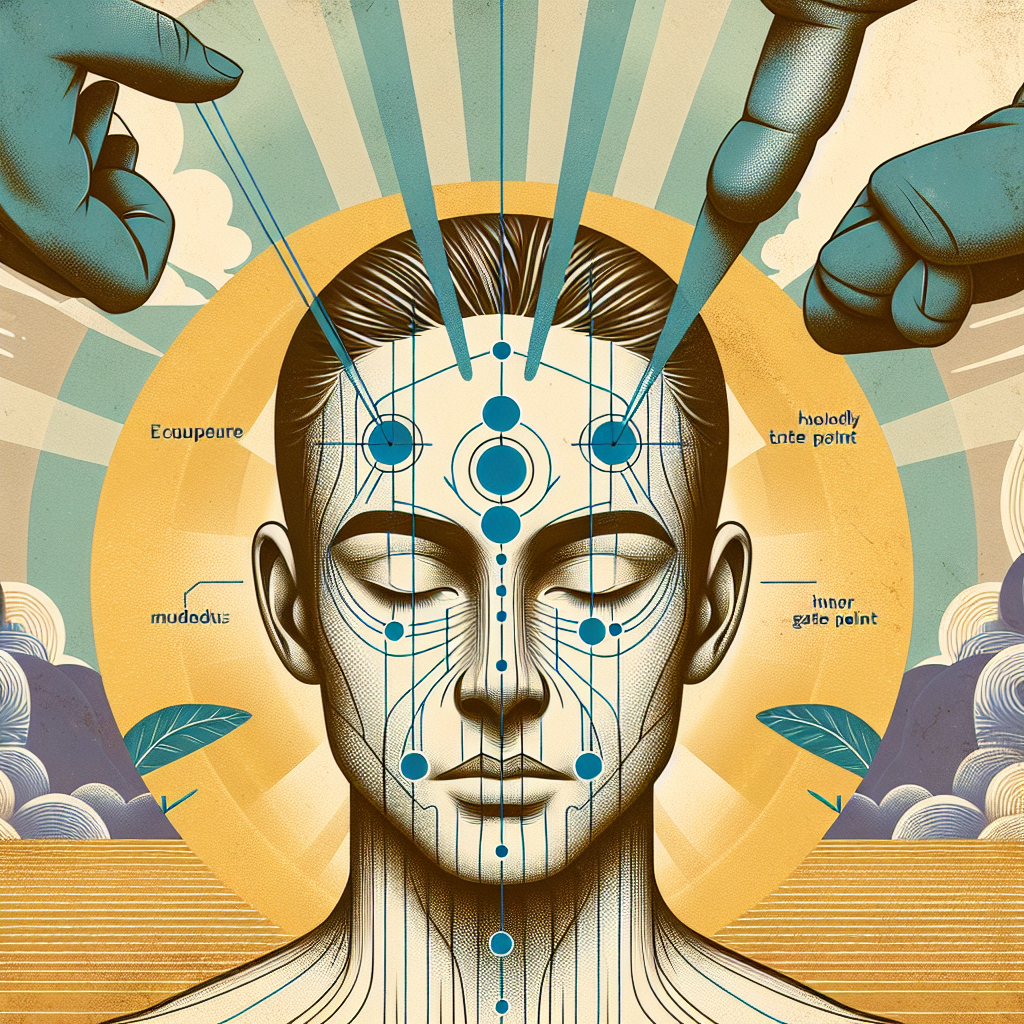
Celebrate National Stress Awareness Day with Acupressure.
Share
National Stress Awareness Day is the perfect opportunity to take a step back from your hectic daily routine and focus on your mental and physical well-being. It's a reminder that stress affects everyone and that managing it is crucial for maintaining a balanced life. One natural and effective tool to help combat stress is acupressure.
Acupressure, an ancient healing practice rooted in Traditional Chinese Medicine, involves applying gentle pressure to specific points on the body to stimulate energy flow, relieve tension, and promote relaxation. The best part? You don't need to be an expert or purchase any special tools. You can practice acupressure at home or even during a busy workday to help alleviate stress and foster a sense of calm.
In honor of National Stress Awareness Day, let's explore the benefits of acupressure, how it works, and a few simple techniques you can try right away.
The Benefits of Acupressure for Stress Relief
Acupressure offers a host of benefits, especially when it comes to managing stress. Here are a few reasons why you should give it a try:
- Promotes Relaxation: Acupressure helps activate your body's relaxation response, reducing stress hormones and calming the nervous system.
- Improves Mood: By stimulating specific pressure points, acupressure can help boost endorphin production, leaving you feeling happier and more at ease.
- Supports Better Sleep: Stress often affects sleep quality. Acupressure can be a natural way to relax your body before bed and improve your sleep patterns.
- Reduces Physical Tension: Stress doesn't only affect your mind—it can also manifest physically. Acupressure eases muscle tension and promotes blood circulation, which can help alleviate headaches, neck pain, and sore shoulders.
- Accessible and Convenient: Unlike other stress-relief techniques, acupressure doesn't require equipment or a lot of time. It’s an easy way to incorporate self-care into your day.
How Acupressure Works
Acupressure is based on the idea that life energy, or "qi," flows through meridians in the body. When this energy flow is blocked or imbalanced, it can lead to physical and emotional discomfort. By applying gentle pressure to specific points along these meridians, acupressure can help restore balance and encourage the body's natural healing processes.
While the concept of qi may seem abstract to some, scientific studies have shown that acupressure can stimulate the release of tension, enhance circulation, and trigger the body's natural relaxation response—offering a tangible effect on stress and well-being.
Acupressure Points for Stress Relief
You don't need a professional to get started with acupressure. Below are three popular acupressure points known for their stress-relief benefits. You can try these techniques whenever you feel overwhelmed or need a moment of calm.
1. The Third Eye Point (Yintang)
Located between your eyebrows, this point is often associated with inner peace and mental clarity.
- How to Find It: Place your finger between your eyebrows, directly above the bridge of your nose.
- How to Apply Pressure: Use your fingertips to gently massage the point in a circular motion for about 1–2 minutes. Take deep breaths as you do this.
Massaging the Third Eye Point can help relieve anxiety, reduce fatigue, and improve focus.
2. The Heavenly Gate Point (Shen Men)
Found on the upper part of your ear, this point is known for its ability to calm the mind and uplift the spirit.
- How to Find It: Locate the triangular fossa in the upper ear. The Heavenly Gate Point is near the top inner corner of this area.
- How to Apply Pressure: Using your thumb and index finger, gently press or massage the point for 1–2 minutes on each ear.
Stimulating this point may help alleviate headaches, reduce anxiety, and enhance overall relaxation.
3. The Inner Gate Point (Nei Guan)
This point is located on your wrist and is commonly used to relieve stress and nausea.
- How to Find It: Measure about three finger-widths below your wrist crease (on the inner forearm) and locate the spot between the two tendons.
- How to Apply Pressure: Use your thumb to press and hold this spot for 1–3 minutes, switching arms as needed.
The Inner Gate Point is thought to help with emotional balance, reduce anxiety, and promote a sense of calm.
Tips for Practicing Acupressure
To maximize the benefits of acupressure, keep these tips in mind:
- Find a Comfortable Space: Choose a quiet and peaceful environment where you can relax fully without distraction.
- Breathe Deeply: As you apply pressure, take slow and deep breaths to enhance the relaxation effect.
- Use Gentle Pressure: Apply firm but gentle pressure, ensuring you're not hurting yourself. A slight sensitivity is okay, but it shouldn't be painful.
- Stay Consistent: Regularly incorporating acupressure into your routine can help you manage stress more effectively over time.
- Be Patient: Acupressure is a gentle technique, so don't expect instant results. Give your body time to respond and adjust to the stimulation.
Make Acupressure Part of Your Stress-Relief Routine
While stress is an inevitable part of life, there are many ways to manage it effectively—and acupressure is one of the simplest and most accessible methods. By taking just a few minutes each day to focus on your well-being, you can improve your mental clarity, reduce tension, and cultivate a more balanced lifestyle.
National Stress Awareness Day is the perfect reminder to practice self-care and prioritize your mental health. Whether you’re in the middle of a busy workday or relaxing at home, these acupressure techniques can help you find calm amidst the chaos.
So, why not give it a try today? Commit to just a few moments of acupressure, and experience the calming effects for yourself. Your mind and body will thank you!
